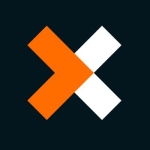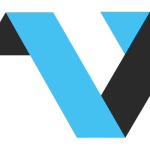The primary use cases we are focusing on are applying automation to processes and integrating systems with API uploads. We have developed a module to handle private information related to the applications and API uploads to ensure the process is feasible without any challenges.
I believe document reading has been beneficial when dealing with Microsoft.
There have been some challenges. We have struggled to take advantage of the power of the program due to the complexity of the reports we want to send to Microsoft. This includes client complaints, large discrepancies, and delays from data centers to solve the issues. As a result, we have faced both advantages and disadvantages. After some time, I believe Microsoft may have made changes to the backend that we are not aware of. This could cause issues, and the client has experienced instability in the current process. To address this, we need to make sure that any changes to the backend are documented and communicated clearly to avoid any potential issues.
The technical support has room for improvement.
I have been using the solution for six years.
I give the scalability of the solution a seven out of ten. The licensing is not bad but scaling requires additional work on the solution.
The solution is intended more for small and medium-sized organizations, not for large more complex companies.
We have 5,000 people using the solution.
The technical support attempts to address any queries, but their knowledge is limited. They try to come up with solutions for new problems and document them if they yield results so that if someone else has the same issue, they can get the same solution. However, they are technically struggling. To resolve the issues, Microsoft created a system where their internal technical team works with a mediator who understands the problem but may not understand the technical details. This mediator then takes the ticket up to the technical team analyzes the issue and provides a resolution. This system has saved them time in responding to and resolving the issue.
The initial setup is great. We're currently building with the connectors. However, automating the process may require additional hardware, which can take time to implement. We have to apply the policy and see how their applications access information. To accommodate the additional hardware, our plan has to be adjusted, but if we don't involve any alternatives, we can deploy more easily.
The automation portion if required is a different department but for the basic setup, we only require two to four people.
The license is 20 million rupees per month. The cost is okay but we are paying per month. Microsoft is providing a license that is automatic which is very helpful. But we know that of the solution, we don't have any annual subscriptions. We pay monthly, otherwise, we choose another solution.
Microsoft is providing an automatic license with a cost of $20 million per month, which is reasonable. However, we don't have any annual subscription options, so we must pay monthly or choose another solution.
I give the solution a seven out of ten.
Microsoft is predicting that improvements will come in the future which will be better than what's currently available in the market. Even if they can build simple and medium processes, they still need to add certain elements and acquire certain licenses in order to run the machine from one place to another. We need to let go of the keys, such as a community rotation which we are automating. I don't believe updates should be pushed for those who are happy with the version they are using because that version is capable and we have fixes for any issues that may come up. Microsoft is now focused on automating development processes. It is important that Microsoft give the community rotation back to users, as we are all users. Regardless of size, we need to be aware of the upgrades that are being made.
We don't believe additional personnel is required for maintenance. We currently have adequate processes in place and automation. In total, there are fifty processes running, two for every system. Therefore, we do not anticipate needing to increase personnel for maintenance purposes.
The other departments have implemented the AP60 and are currently working on it. In my department, we are using Power Automate which is working but I need to check what progress the other departments have made and if they are facing any challenges to determine if it is easier to build with AP60 or with Power Automate.
There are many alternative solutions to Power Automate that also are cloud-based that I believe offer an annual subscription but I am not sure.
I would suggest starting with simple or medium processes, rather than complex ones. Begin with a pilot project to determine if it is profitable or not. We should also try to find a way to automate the process, as it could otherwise become stuck. Additionally, it is important to consider any issues that could arise with the elements that are currently working; the same elements may fail tomorrow. Ultimately, if we can handle these issues in the development phase, the solution will function great.



















